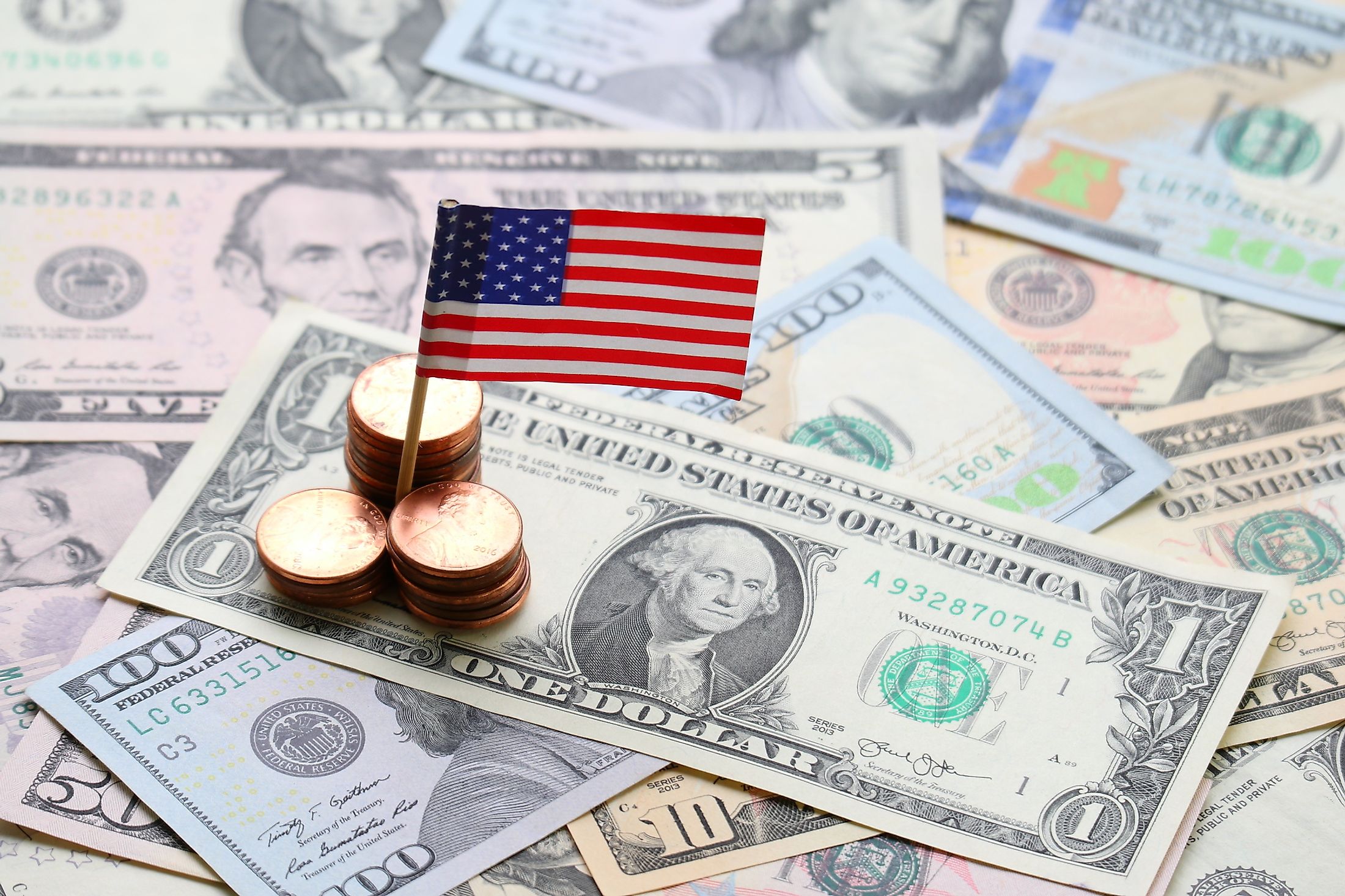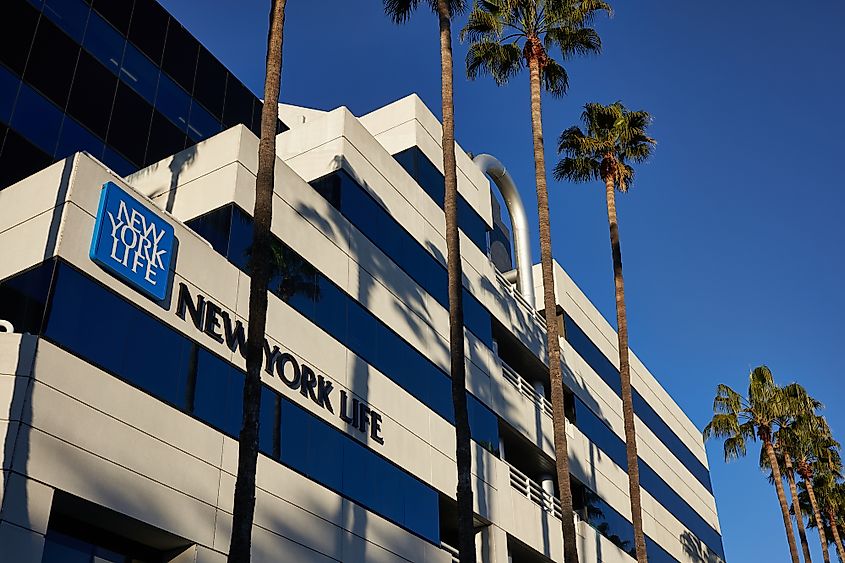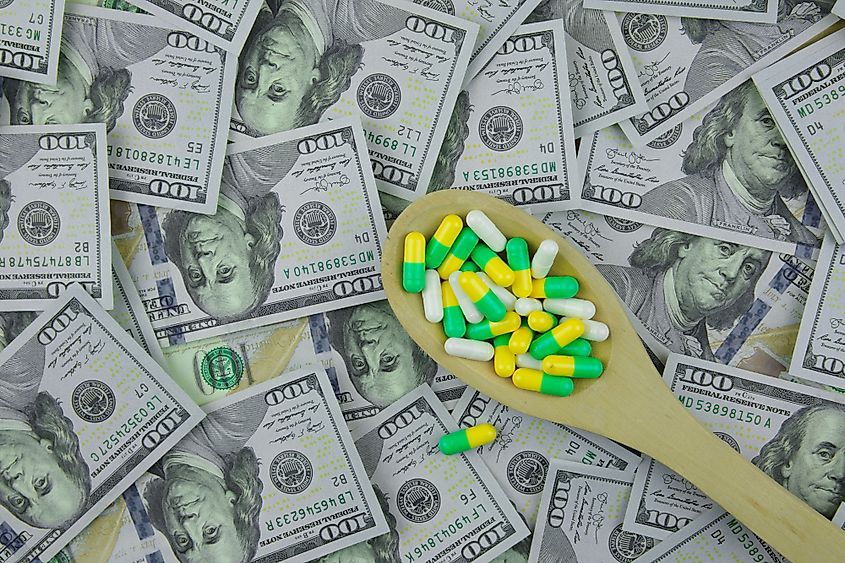
The Biggest Industries In The United States
As a highly developed nation, the United States continues to sustain its position as one of the world's most powerful and largest economies. As per the latest 2022 estimate, the US GDP of $25.35 trillion is the largest nominal GDP in the world, which accounts for about a quarter of the world's nominal GDP. The United States also has the most technologically powerful and innovative economy in the world. By Purchasing Power Parity, the US holds more than 16% of the gross world product and is considered to be the second-largest in the world, just behind the People's Republic of China. However, due to the COVID-19 pandemic at the beginning of March 2020, the US economy suffered major setbacks because of the shutting down of significant sections of the country's economy. The following article discusses the 10 Biggest Industries by Revenue in the United States.
Content:
- Retirement And Pension Plans - $1.257.9 billion
- Health And Medical Insurance - $1.145.1 billion
- Drug, Cosmetic, And Toiletry Wholesaling - $1.049.9 billion
- Hospitals In The US - $981.0 billion
- New Car Dealers In The US - $978.7 billion
- Life Insurance And Annuities In The US - $886.7 billion
- Pharmaceuticals Wholesaling -$868.8 billion
- Public Schools In The US -$791.0 billion
- Supermarkets And Grocery Stores In The US - $758.4 billion
- Commercial Banking In The US - $703.4 billion
1. Retirement And Pension Plans - $1.257.9 billion
Comprising only Private and Public defined benefit pension plans, it is estimated that the Retirement and Pension Plans Industry of the US will grow annually by 2.1% over the next five years. Despite much volatility in investment income, steady growth and strong investment gains have led to the industry's growth. In 2017, substantial equity gains helped increase the industry’s revenue growth.
2. Health And Medical Insurance - $1.145.1 billion
Over the next five years, the US's Health And Medical Insurance Industry is estimated to grow due to various factors, including a consistent rise in healthcare expenditure, medical cost inflation, etc. In terms of market size, the Health And Medical Insurance Industry is a top-ranked Finance And Insurance industry. It is to be noted that the Health And Medical Insurance Industry has also greatly benefitted from an aging population, as older people need more health insurance coverage than younger people. Moreover, government-sponsored programs like Medicare have helped increase government spending on health and medical insurance.
3. Drug, Cosmetic, And Toiletry Wholesaling - $1.049.9 billion

The Drug, Cosmetic, And Toiletry Wholesaling industry emerged largely unscathed from the recession mainly due to the high demand for pharmaceutical products. The industry has also greatly benefitted due to the aging population, as a significant portion of the industry’s revenue is earned by the sale of both prescribed and over-the-counter pharmaceutical products that are in great demand by the elderly population. However, it is to be noted that over the past five years, the industry's performance has been severely affected due to the increased use of generic pharmaceuticals and patent expiration of various commonly used drugs.
Hospitals In The US - $981.0 billion

Health Care And Social Assistance is the country’s largest private employment sector employing more than 16.4 million people. The hospitals in the US are struggling greatly as the COVID-19 pandemic continues to rage across the country. The access to medical insurance and increased demand from the elderly population had helped in generating substantial revenue growth for this industry. However, all this revenue growth has been outweighed by the highly negative financial impact of the coronavirus pandemic.
New Car Dealers In The US - $978.7 billion

New Car Dealers Industry in the US deals with the selling of new and used vehicles, providing vehicle repair and maintenance services and car insurance options. The US has the second-largest automobile market globally, and its economy is heavily reliant on road transport. Moreover, with the US having the world’s highest per-capita rate of vehicle ownership; and with low-interest rates, the cost of financing vehicles will become more affordable, in turn leading to increased revenue growth for this industry.
Life Insurance And Annuities In The US - $886.7 billion

The Life Insurance And Annuities Industry has been reported as one of the country’s most significant sources of investment capital. The industry holds more than 20% of all the corporate bonds in the country and represents the most significant source of bond financing for the country’s businesses. However, due to the slowdown of economic activity resulting from the coronavirus pandemic, the Life Insurance And Annuities Industry has suffered greatly. Nevertheless, with renewed economic growth, the Life Insurance And Annuities Industry is expected to grow in the coming years.
Pharmaceuticals Wholesaling -$868.8 billion

The Pharmaceuticals Wholesaling industry includes companies involved in the bulk distribution of both prescribed and over-the-counter pharmaceutical drugs for the treatment of various diseases. Over the years, the industry has greatly benefitted from the rapid rise in the prices of prescribed medications, as well as an increased number of people having private health insurance. In addition to this, an aging population has also greatly benefitted the demand for pharmaceutical industry products.
Public Schools In The US -$791.0 billion

The Public School Industry includes primary and secondary schools that provide education for children without any charge. These schools are financed by Federal, local, and state governments. Funds are given to schools based on various factors, including student demographics, number of enrolments, facility requirements, and available programs. It is to be noted that the United States spends more on education per student than any other nation. It is estimated that this government funding to schools is expected to increase over the years under the CARES Act.
Supermarkets And Grocery Stores In The US - $758.4 billion

Over the years, the rise in per capita disposable income levels and the availability of consumers to buy more premium products have greatly helped increase the revenue of the Supermarkets And Grocery Stores Industry. Being considered “essential businesses,” many grocery stores remained open during the entire pandemic period, which has, in turn, helped to expand the sales of many industry operators.
Commercial Banking In The US - $703.4 billion

Most of the revenues in the commercial banks are generated through the interest earned on loans as well as the interest that is paid on the deposits and borrowed funds. Over the years, the rising interest rates and improving economic conditions have greatly benefitted the Commercial Banking Industry.
The above article discusses the ten biggest industries by revenue in the United States. As mentioned in the article, the Retirement And Pension Plans Industry generates the highest revenue, while the Commercial Banking Industry generates the lowest revenue.











